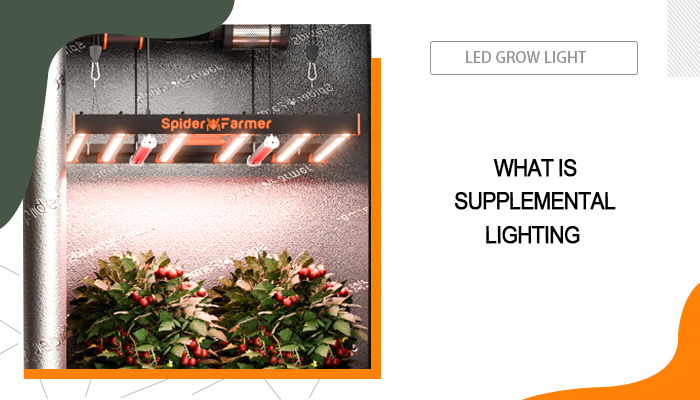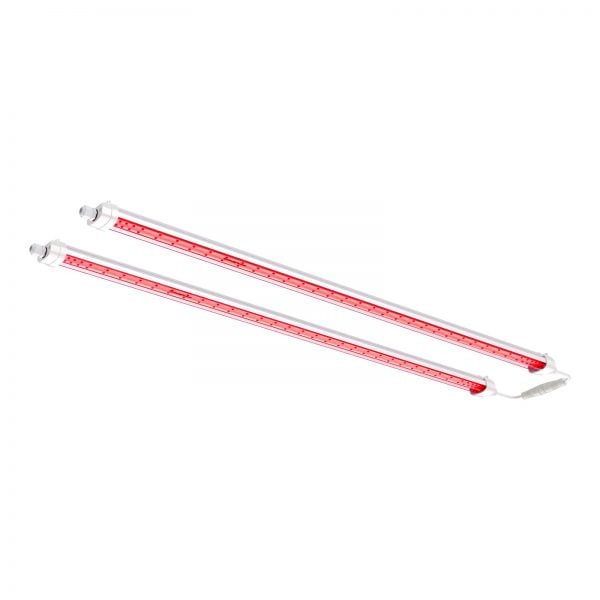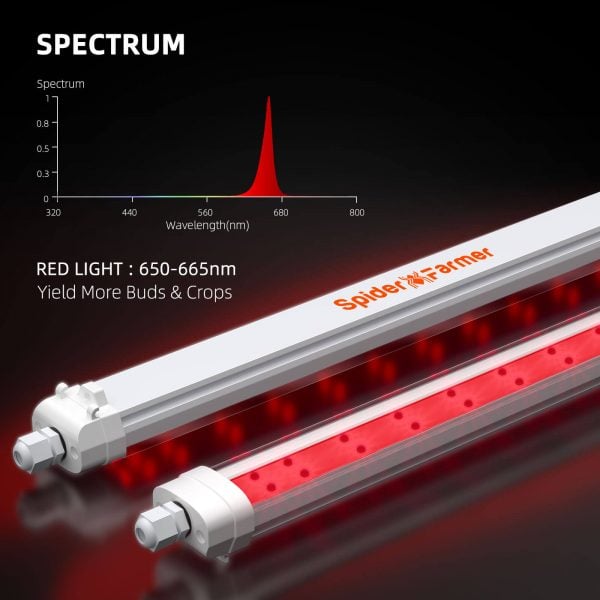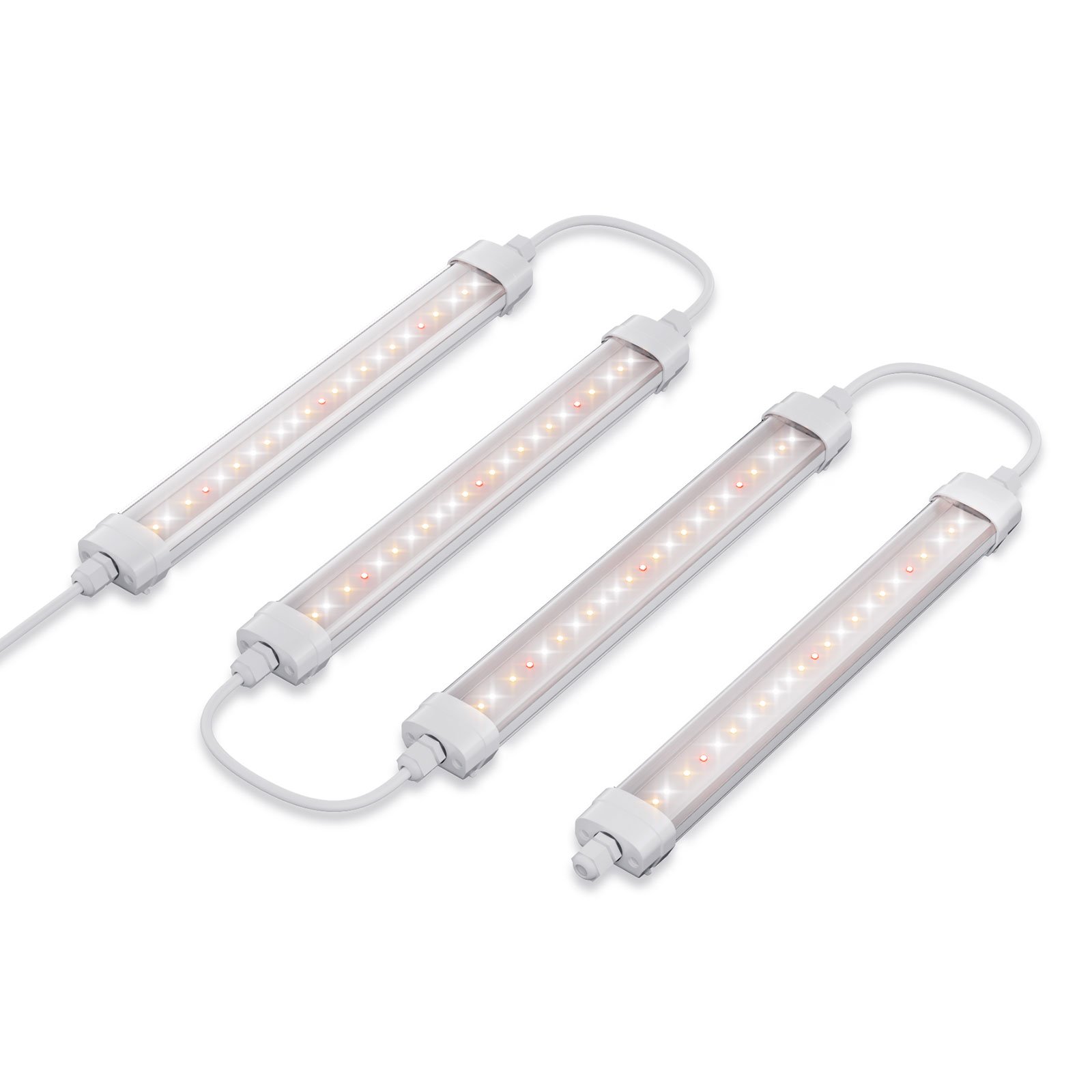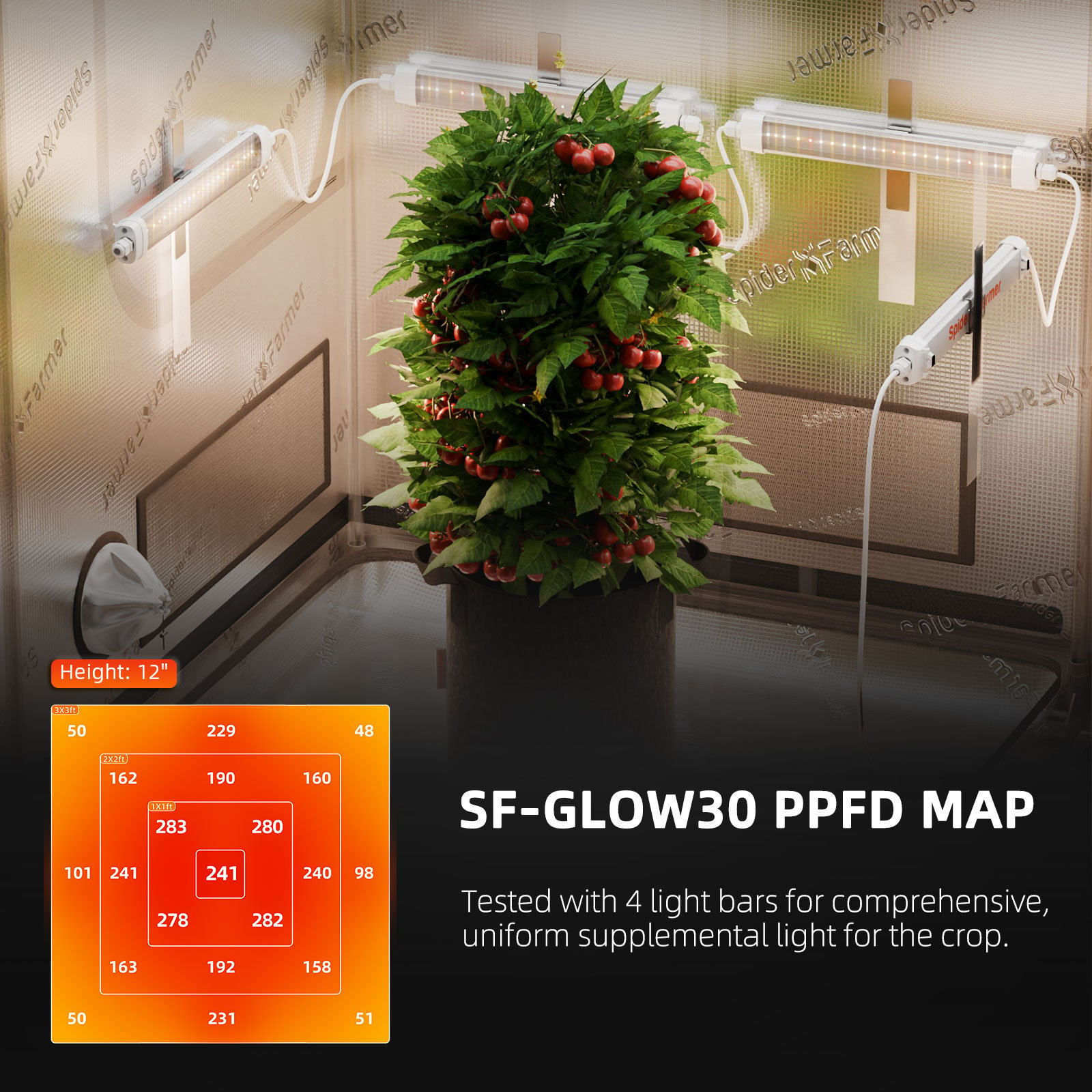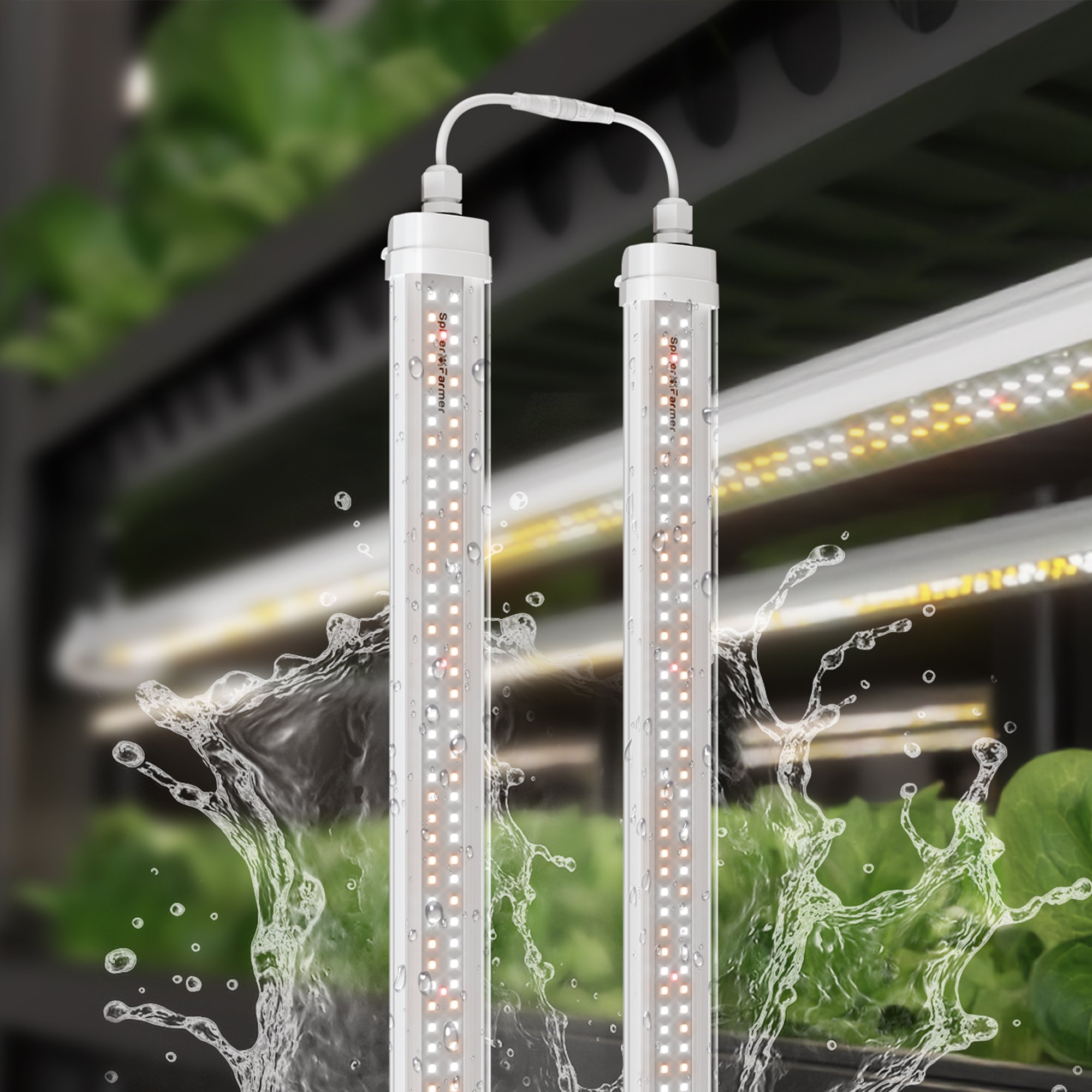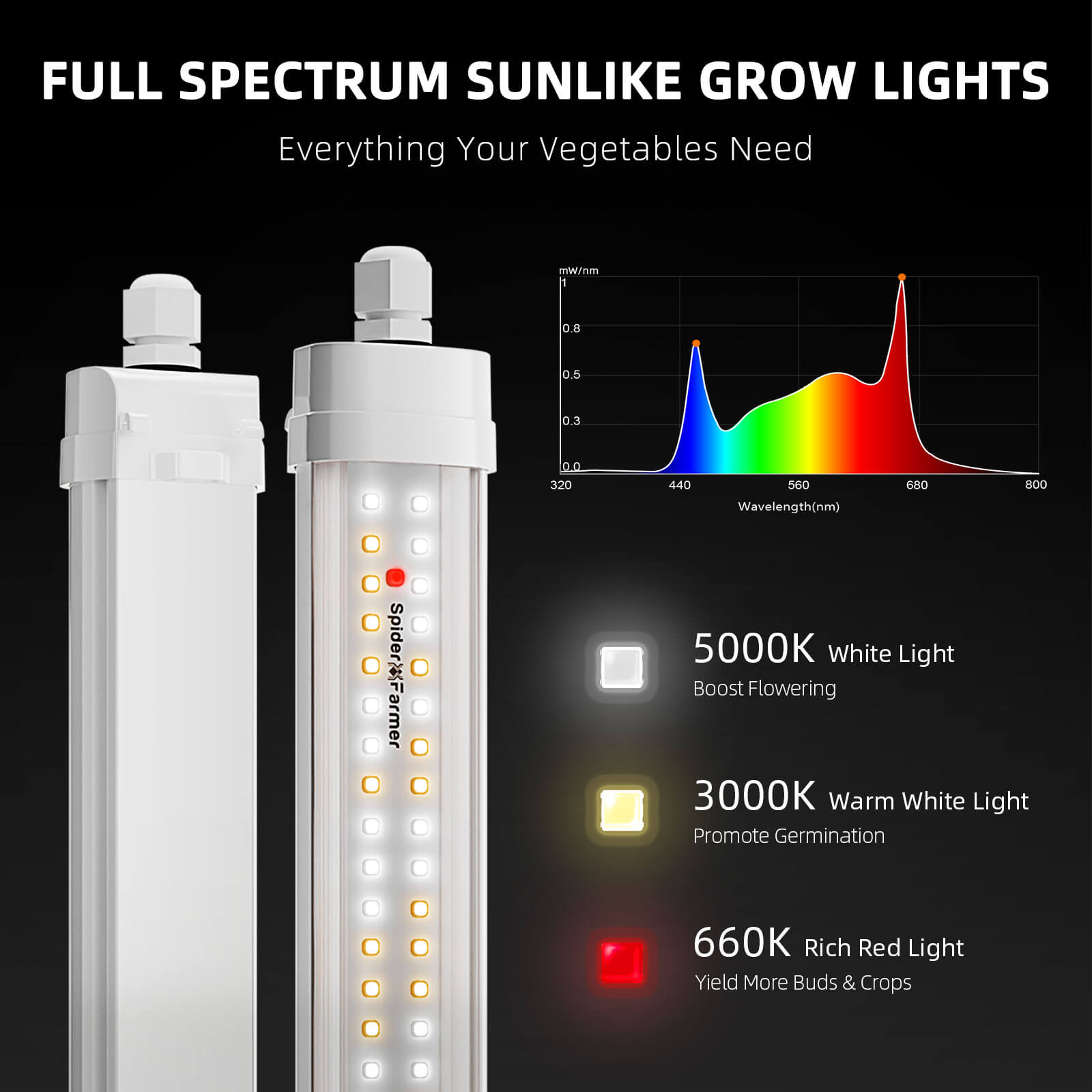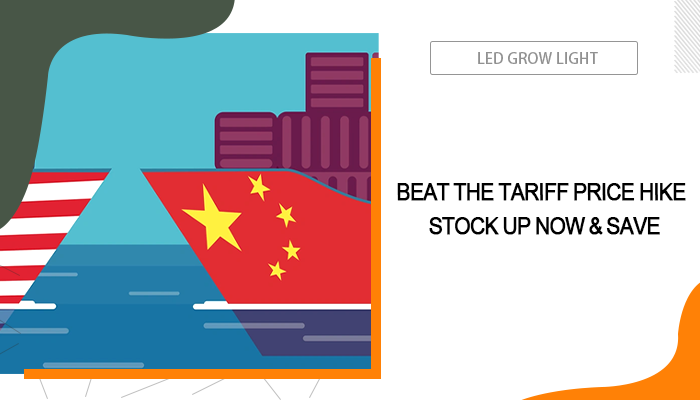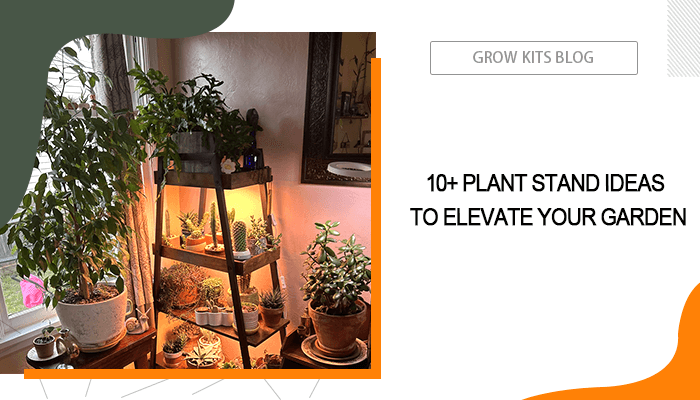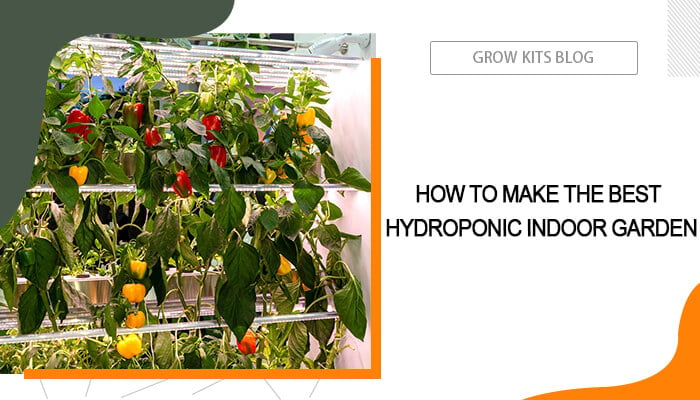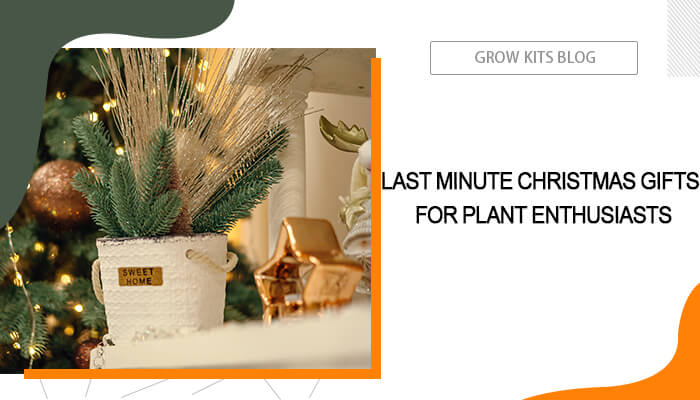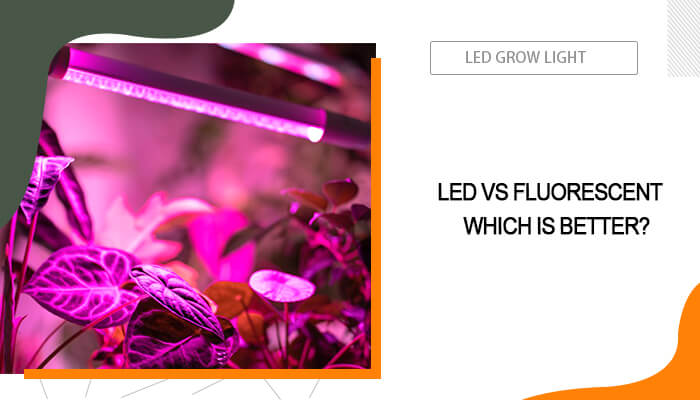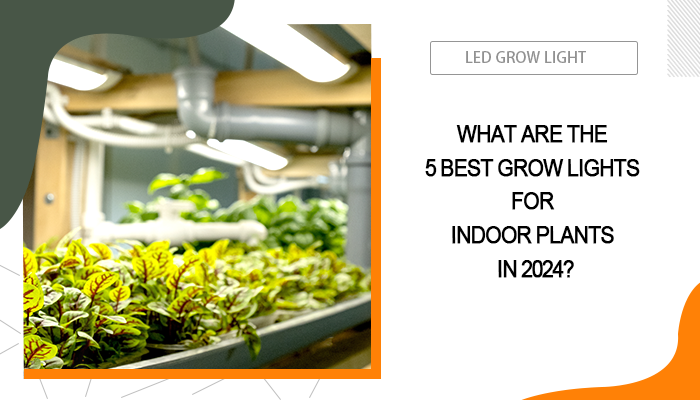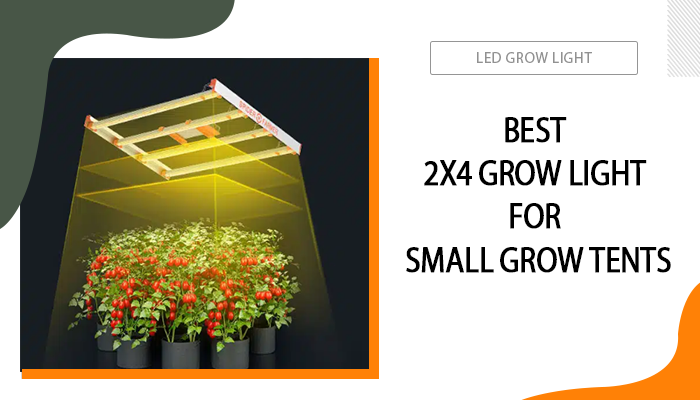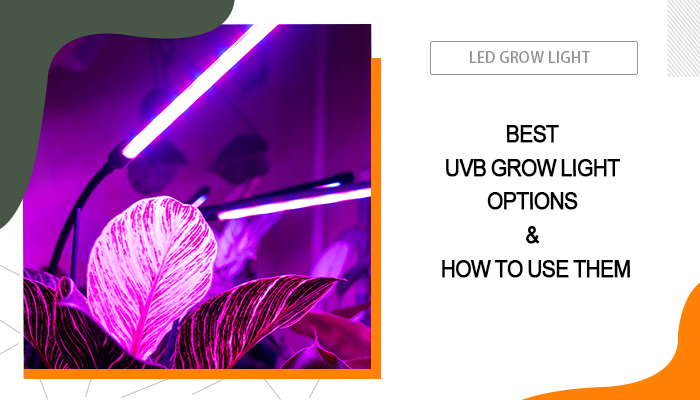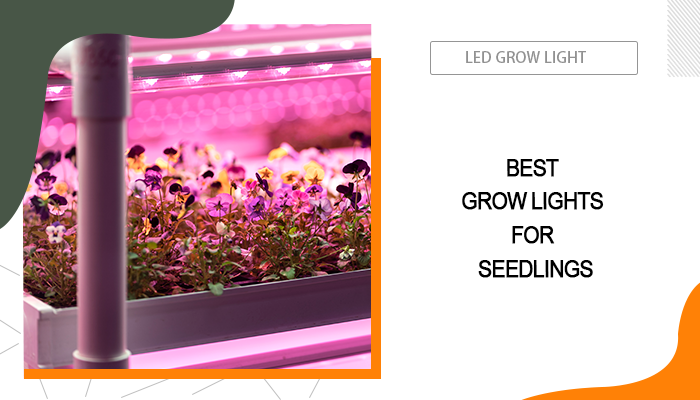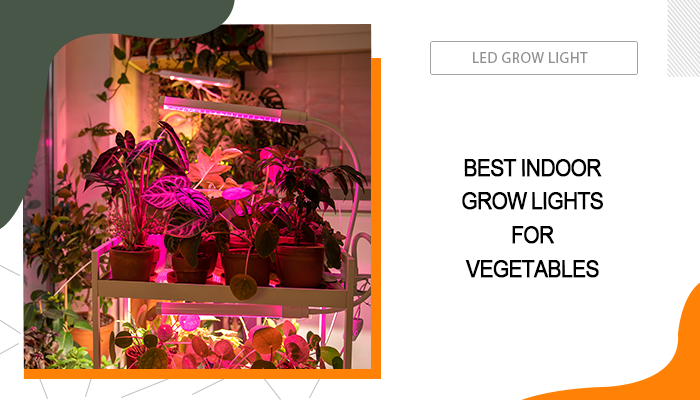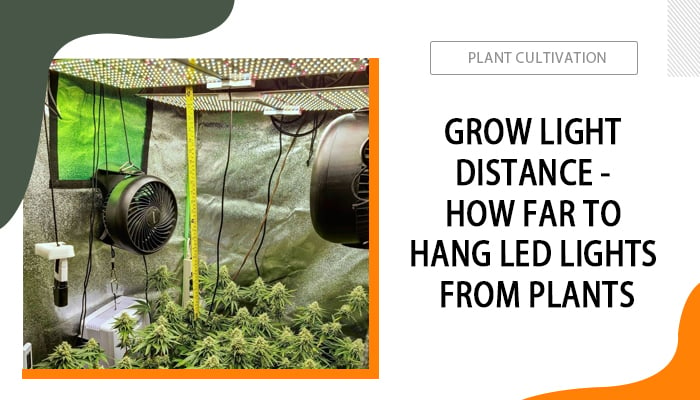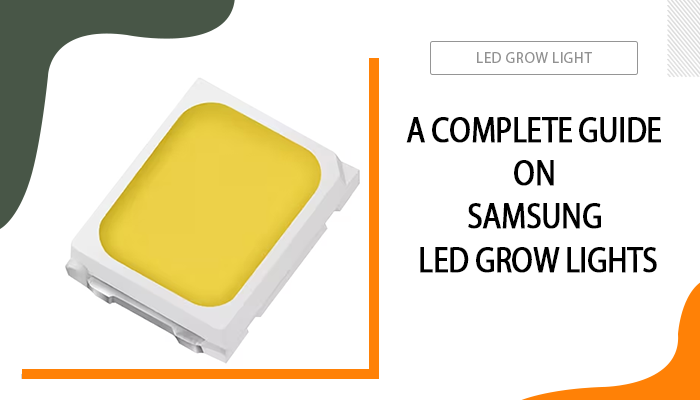Supplemental Lighting: Definition, Benefits, and Usage
Grow lights are pretty helpful in terms of mimicking natural sunlight for indoor gardens. However, there are times you find the grow lights not powerful or delicate enough. For example, plants in certain stages of growth, particularly the vegetative and flowering stages, require higher levels of light intensity and more light coverage to thrive. This is where supplemental lighting comes into play.
It may sound like a new concept to you, but don’t worry, we’ll explain everything about supplemental lighting in the following content, and show you how to use it to improve plant growth and yield.
Table of Contents
What Is Supplemental Lighting
Supplemental lighting is the additional lighting bar that’s designed to supplement your primary grow lights. As the name indicates, its main purpose is to complement the lighting needs of your plants, including enhancing light intensity, providing a specific growth light spectrum, and filling in the gap that the main grow lights fail to cover.
Supplemental lighting for indoor plants can come in different colors of light, say, red, blue, or UV light. Since the two essential light colors that affect your plant growth are blue and red, commonly, you’ll see supplemental light bars of solely red or blue.
Regarding the grow light type, you may see options like fluorescent or T5 supplemental lights, but truth be told, they are definitely not the best choice. We’ll focus on supplemental LED grow lights in this post, as they are the most effective and low-heat emission choice.
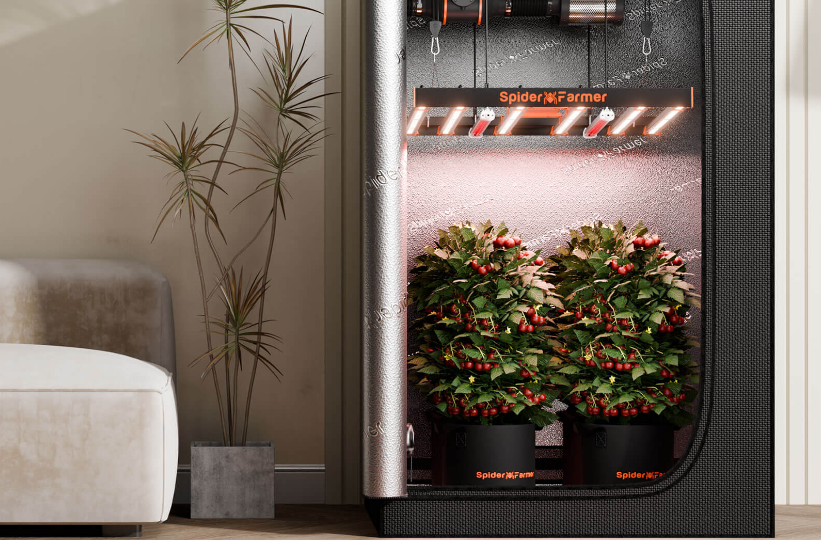
Benefits of Using Supplemental Lighting for Grow Rooms
It’s hard for the main grow light to perform best through the whole plant life cycle, particularly during the vegetative and flowering stages. Fortunately, whether you grow plants in grow tents or the greenhouse, you can benefit bonus from supplemental lights such as:
Enhanced light penetration and coverage: Even the strongest primary grow lights struggle to reach the lower leaves beneath the canopy's top layer. As the light from primary sources spreads, its intensity diminishes, leading to insufficient light for plants at the periphery of the coverage area, which can result in smaller yields. Supplemental lights in this case work as under-canopy LED grow lights. When placed vertically or horizontally around the growing area, they can improve light penetration throughout the canopy, leading to larger, higher-quality yields.
Tailored wavelength for vegetative & flowering stages: Although the intensity of your primary light might suffice for photosynthesis, it's the presence of particular wavelengths that promote root development and flowering. For example, supplemental blue light( 450-495 nm) supports stronger root development during the vegetative stage and encourages compact, healthy foliage growth. The red supplemental light (650-665nm) is most beneficial during the flowering and fruiting stages of a plant's life cycle. It benefits flowering, budding, and fruit production, contributing to the overall reproductive success of the plant.
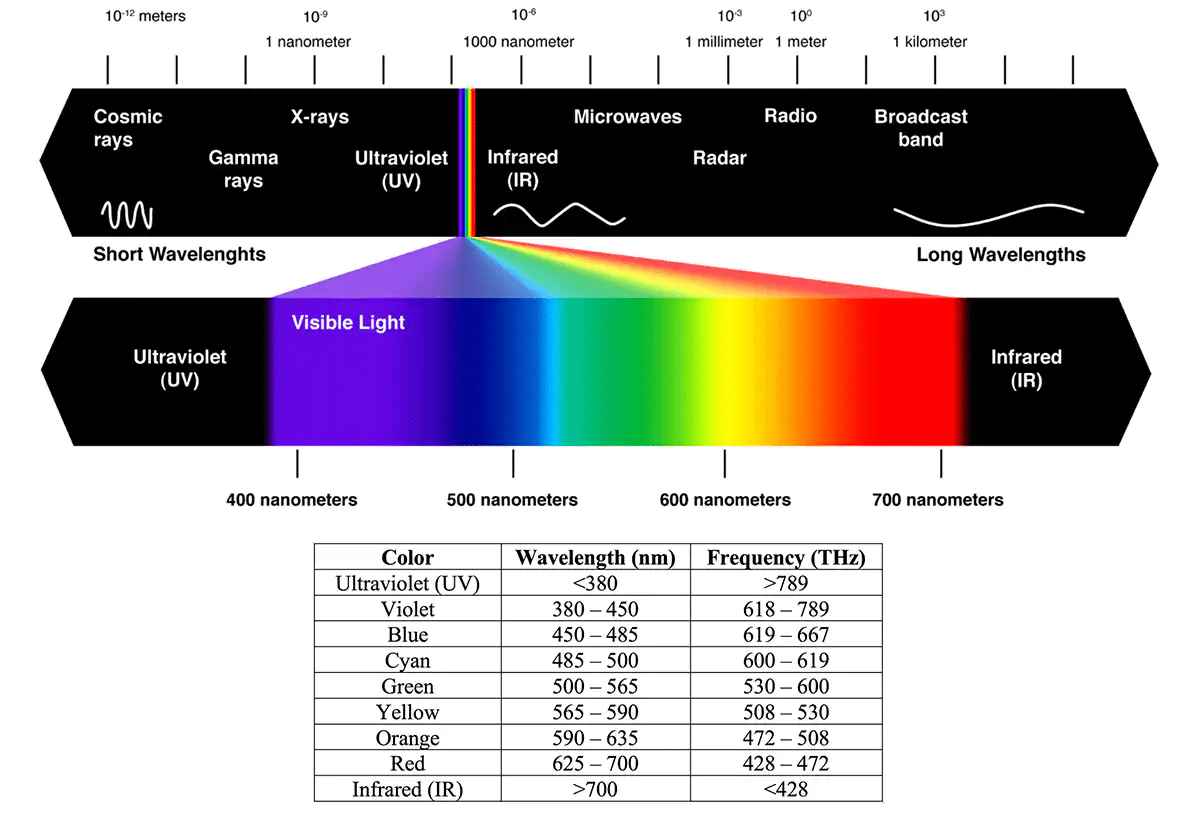
Overall, supplemental lighting can improve the quality of your plants by promoting stronger, healthier growth. This includes better leaf color, more robust stems, and, in the case of flowering plants, more vibrant blooms. This explains why plants grown with supplemental lights tend to have greater yields.
Best Supplemental Lighting Bars
Reading so far, you might want to add a supplemental light to your grow light collection. Spider Farmer prepares a series of supplemental lighting bars for grow rooms, be it UV, IR, red, or a combo of UV & IR. Let’s take a look at them and select one that fits the wavelength you need.
Best UV LED Supplemental Light Bar (365nm) - Veggie & Flowering Stage
Thanks to 240 densely arranged diodes and multi-light daisy chains, Spider Farmer Supplemental UV LED Light Bar is a go-to choice for under canopy LED grow light in a 2x2 grow tent. The bar-style lights are structured for easy integration, allowing the fitting of three supplemental light bars between every two main light bars.
When paired with the main grow lights, the Spider Farmer Supplemental UV LED Light Bar is a perfect boost during the flowering stage to increase the production of essential oils, flavonoids, and terpenes. This can lead to improved flavor profiles and higher active compound concentrations in the final yield. Additionally, UV light can improve a plant's resistance to pests and diseases.
Best Red LED Supplemental Light Bar (660nm) - Flowering Stage
If you are looking for stronger supplemental light for the flowering and fruiting stages, don’t miss Spider Farmer GlowR40 Deep Red Supplemental LED Grow Light. It offers a specialized red light spectrum(650-665nm) to enhance photosynthesis and increase yield. Additionally, you can benefit from the following advantages:
- Unlike other supplemental lights, the Spider Farmer GlowR40 Deep Red Supplemental LED Grow Light has an IP65-rated waterproof lampshade, making it work as usual even in humid conditions.
- Similarly, this red supplemental light allows for easy expansion and customization of your grow light setup. You can connect up to 32 bars at 220V for your grow room.
- The inclusion of a digital programmable timer ensures that you can tailor the light schedule to the specific needs of your plants, optimizing growth and boosting productivity.
Spider Farmer® GlowR80 80W Deep Red Spectrum 660nm Supplemental LED Grow Light for Indoor Plants,Hanging Plug in Grow Lamp for Hydroponic Greenhouse Plants Seedling Veg
Best IR LED Supplemental Lighting Bar (730nm) - Flowering Stage
While IR light isn't directly used in photosynthesis, it can be beneficial in controlled environments to help simulate natural temperature changes that plants expect with seasonal variations. Spider Farmer Supplemental IR LED Light Bar, the 23.6-inch set of infrared light bars includes two units, each housed in a robust metal case with 44 diodes designed for durability and long-term use.
Best Full-spectrum LED Supplemental Lighting Bar - All Stage
If you prefer an all-in-one solution for under canopy lighting, full-spectrum LED supplemental lighting bars are the best supplemental lighting for all stages of plant growth. Spider Farmer Glow30 Full Spectrum Supplemental LED Light Bars, the four 13-inch LED bars are highly effective for inter-canopy or side lighting applications. This design provides expanded light coverage to the lower sections of your plants, often missed by primary overhead grow lights.
By supplementing full-spectrum light to these harder-to-reach areas, you can optimize your grow environment, enhance plant development, and ultimately boost overall plant yields. In addition to this supplemental light, the Spider Farmer Glow80 Full Spectrum Supplemental LED Light Bars can also work as an under canopy light if you are growing certain crops.
420 Price Guarantee丨Spider Farmer Glow30 32W Full Spectrum Side Lighting LED Grow Light Bars 13”, 4-Bar Kit, Boosts Lower Bud Growth & Yield,Ideal for Cloning, Veg & Flowering in Indoor Plants & Grow Tents
Why Do You Need the Glow30 Side Lighting?
Most grow lights are mounted on top of grow tents, but light struggles to penetrate deep into the lower canopy. This means lower buds and branches receive less light, resulting in slower growth, smaller yields, and lower potency compared to the top. Without proper lighting,you’re not maximizing your plant’s full potential. Spider Farmer Glow30 solves this problem! It provides targeted side lighting, ensuring that lower buds receive the extra light they need to grow bigger, denser, and healthier. The flexible installation lets you mount it on grow tent sidewalls or place it anywhere for optimized light distribution. Plus, it’s super energy-efficient—just 32W! Even if you run it 4 hours per day for 21 days, your electricity cost will only be a few dollars. With better light coverage and bigger yields,Glow30 is the upgrade your grow setup needs. Length of wires at both ends of a single light bar: 70cm/25.56'' Package contents: 4x Light Bars ( 32 watt/4 Bars) 4x Fixing Clips 1x Backed Adhesive Velcro 4x Bondage Strap 5x Plastic tie 1X User Manual420 Price Guarantee丨Spider Farmer® Glow80 80W Full Spectrum Waterproof LED Grow Light Bars 43”, 2-Bar Kit,Linkable Plant Lamp for Cloning,Veg & Flowering in Indoor Plants & Greenhouse
- Full-spectrum design
- IP65 waterproof rating
- Daisy Chain
- Multiple Installation Methods
How to Use Supplemental Lighting for Indoor Growing
Now you should have a rough idea about supplemental lighting. The next question is - how do you harness the benefits of these lights in your grow room? Here's a comprehensive guide:
1. Assess the Light Intensity Needs
For an optimal and precise growing experience, it’s suggested to evaluate the amount of light reaching your plants and the intensity required for optimal growth with a light meter. Your supplemental lights should aid your primary light, not overpower it, with each supplemental unit ranging from 25w to 100w. Establish the ideal PPFD for your plants, identify where it diminishes, and select a supplemental light to match or get as close as possible to the ideal intensity.
2. Determine the Coverage Area
Understand the extent of your primary light's reach and where it fails to illuminate adequately. This will dictate how many supplemental lights you might need to cover any dark spots or the outer edges of your canopy. Fortunately, Spider Farmer makes things easier for you. You can find pairing recommendations about each supplemental light and their suggested usage in grow tents.
3. Install Supplemental Lighting Horizontally or Vertically
Place supplemental lights strategically. Positioning them above the plants can boost the overall intensity and wavelength delivery. You can also use them as under-canopy LED grow lights, which means hanging them on the sides to broaden the primary light's footprint, particularly useful for reaching the edges of your canopy. If you are new to supplemental lighting, you can begin by pairing these lights with other bar-designed LED grow lights horizontally, and modify the position as you monitor the plant growth.
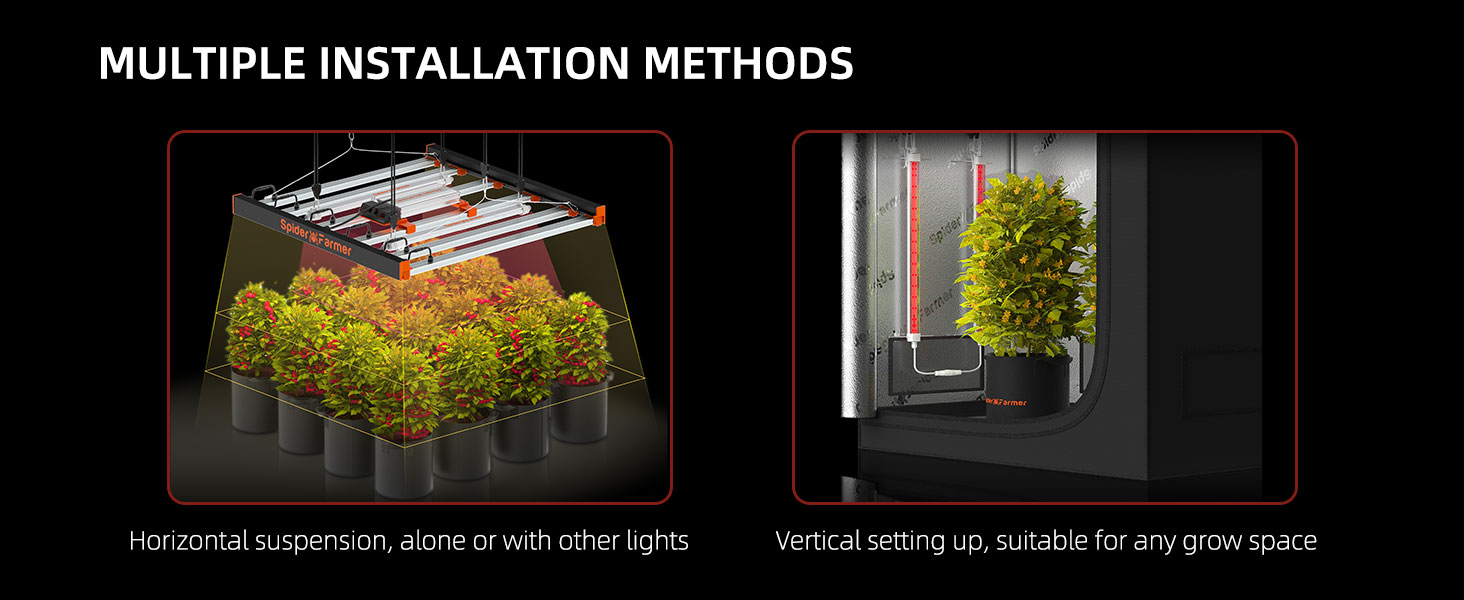
4. Adjust the Light Position & Duration
Once installed, the supplemental lights should be appropriately distanced - typically at least 12 inches away, to avoid heat stress. For a more detailed grow light distance, check this guide: How Far to Hang LED Lights from Plants? Moreover, supplemental lights need to be active for a shorter duration compared to your primary grow lights.
The rest is ongoing monitoring. Check their operation and ensure the supplemental LED lights provide the desired light coverage without overheating or harming the plants.
Summary
As we wrap up our exploration of supplemental lighting and under-canopy LED grow lights, we've learned their significance in bolstering plant growth and yield. These lights not only fill the light intensity and spectrum gaps left by primary grow lights but also provide flexibility in targeting specific growth stages. By understanding how to choose and utilize these lights - considering the right wavelengths, optimal intensity, and coverage area - we empower indoor gardeners to cultivate healthier plants and enhance their harvests. Implementing Spider Farmer's range of supplemental lighting bars effectively can lead to significant improvements in plant development, ultimately elevating the indoor growing experience.




